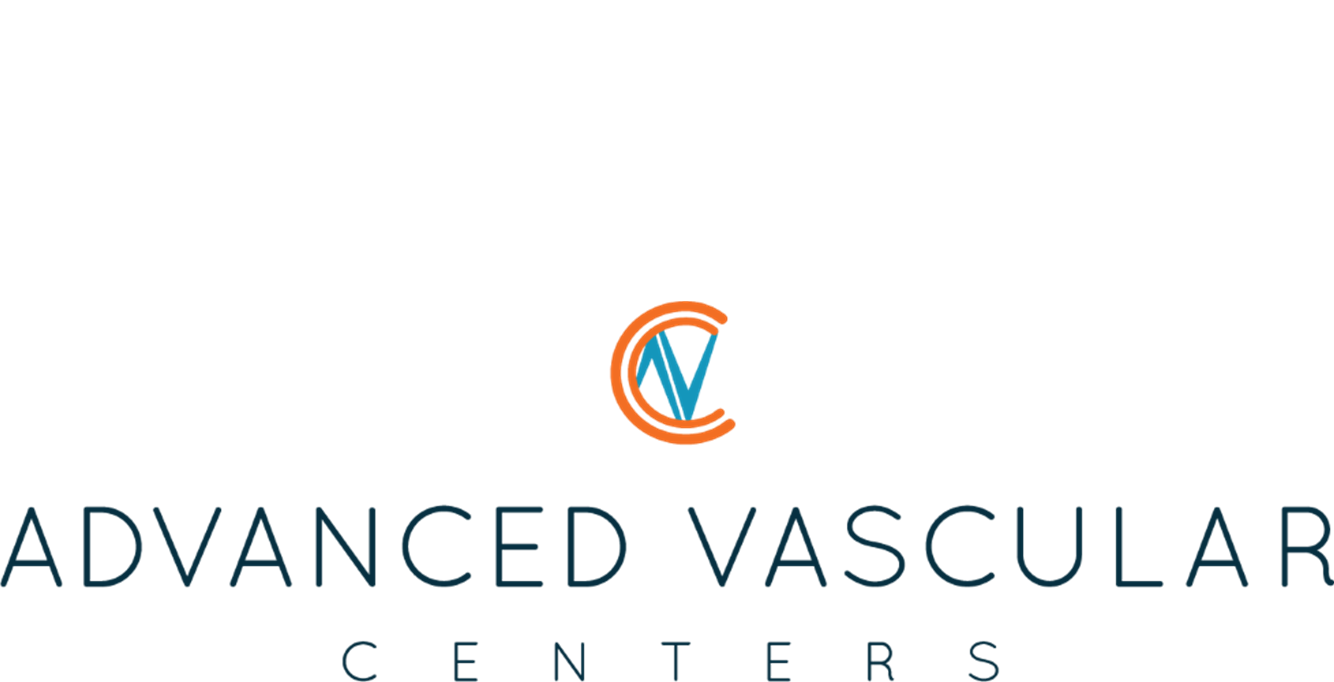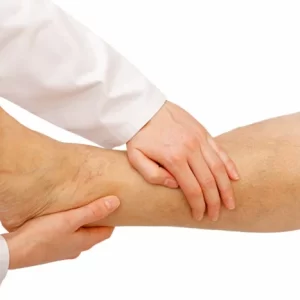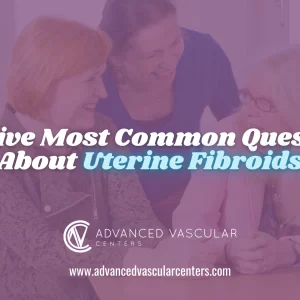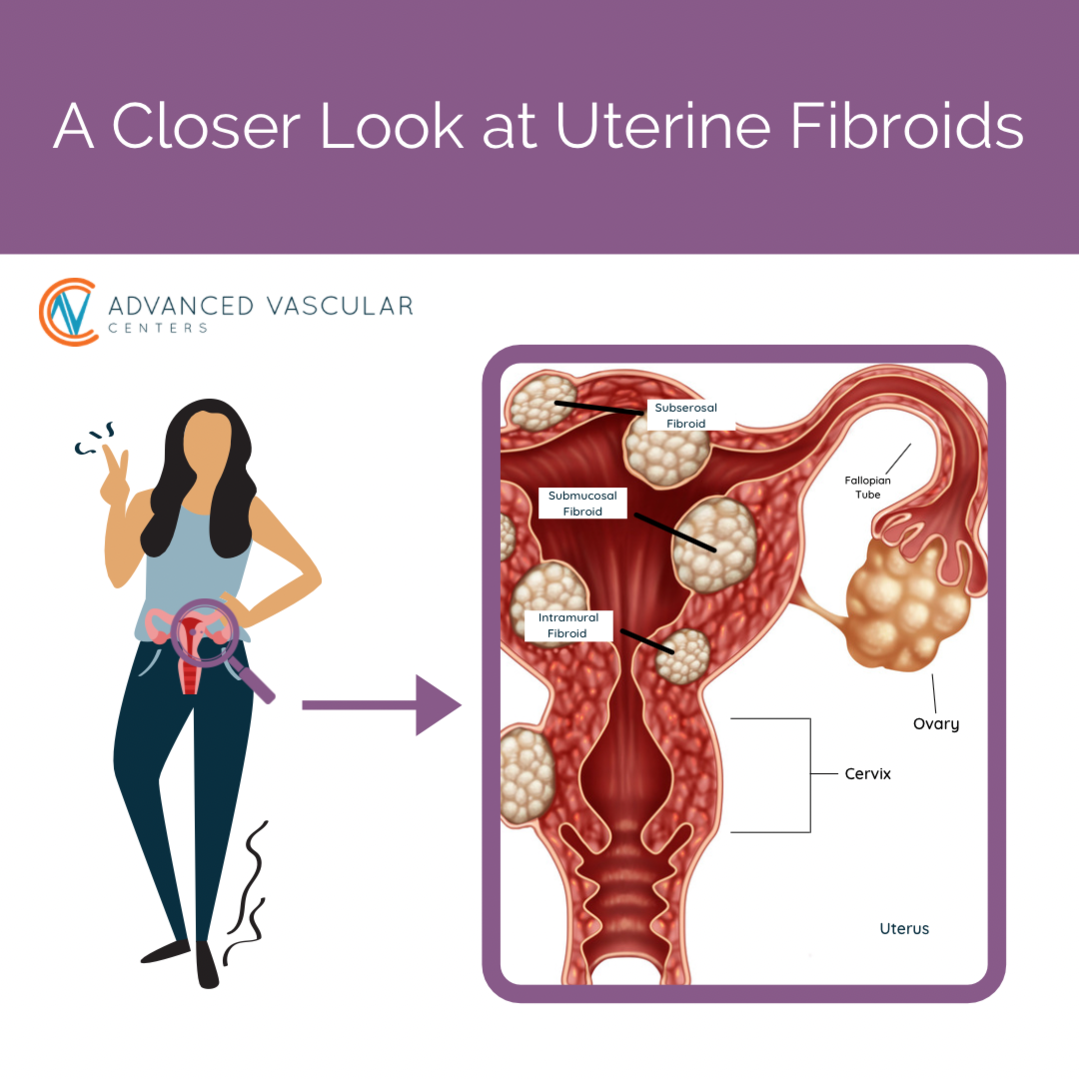UTERINE ARTERY EMBOLIZATION & UTERINE FIBROID EMBOLIZATION
Uterine Artery Embolization (UAE) and Uterine Fibroid Embolization (UFE) are minimally invasive procedures used to treat uterine fibroids, which are noncancerous growths that develop in the uterus. UFE is an alternative to surgical options such as hysterectomy or myomectomy and is performed by interventional radiologists.
Contact AVC to see if you are a candidate for Uterine Artery Embolization (UAE) and Uterine Fibroid Embolization (UFE).
Overview of Uterine Fibroid Embolization and Uterine Artery Embolization
Uterine fibroid embolization (UFE) and uterine artery embolization (UAE) are essentially the same procedure. Both terms refer to the minimally invasive treatment used to treat uterine fibroids by blocking the blood flow to the fibroids. The procedure involves injecting embolic agents into the uterine arteries, which supply blood to the fibroids, leading to their shrinkage and symptom relief. The terms “UFE” and “UAE” are often used interchangeably in medical literature and practice.
Advantages of UFE and UAE
UFE and UAE offers several advantages over surgical options such as hysterectomy or myomectomy, including:
- Minimally invasive: UFE and UAE are performed through a small incision and does not require open surgery.
- Preservation of the uterus: Unlike hysterectomy, which involves removing the uterus, UFE or UAE allows women to preserve their uterus.
- Shorter recovery time: Recovery from UFE or UAE is typically faster than recovery from surgery, with most women able to return to normal activities within a week.
- Effective symptom relief: UFE and UAE have been shown to effectively relieve symptoms such as heavy menstrual bleeding and pelvic pain in the majority of women.
Recovery and Follow-Up
After UFE or UAE, most women experience cramping, pelvic pain, and fatigue for a few days. Pain medication and rest are usually recommended to manage these symptoms. Follow-up appointments are scheduled to monitor the size of the fibroids and evaluate symptom improvement. Most women can return to normal activities within a week of the procedure.
Effectiveness of UFE and UAE
UFE and UAE have been shown to be highly effective in treating uterine fibroids and relieving symptoms. Studies have shown that the majority of women experience significant improvement in symptoms such as heavy menstrual bleeding, pelvic pain, and pressure on the bladder or rectum. The long-term effectiveness of UFE is also well-documented, with many women experiencing lasting symptom relief.
Uterine fibroid embolization (UFE) is a safe and effective treatment option for women with symptomatic uterine fibroids. The procedure offers several advantages over surgical options, including preservation of the uterus and faster recovery time. With its high success rate and low risk of complications, UFE has become a widely used and accepted treatment for uterine fibroids.
The UFE and UAE Procedure
The UFE or UAE procedures are typically performed by an interventional radiologist and involves the following steps:
-
- Pre-procedure evaluation: Before the procedure, the patient undergoes imaging studies, such as MRI or ultrasound, to determine the size and location of the fibroids.
- Anesthesia: The patient is given local anesthesia to numb the incision site and a mild sedative to help relax.
- Catheter insertion: A small incision is made in the groin, and a catheter is inserted into the artery that supplies blood to the fibroid.
- Embolization: Small particles are injected into the artery to block blood flow to the fibroid, causing it to shrink.
- Post-procedure recovery: After the procedure, the patient is monitored for a few hours and may be discharged the same day or the following day.
Risks and Complications
While UFE is considered safe, there are some risks and complications associated with the procedure, including:
- Infection: There is a small risk of infection at the incision site or in the uterus.
- Damage to surrounding tissues: In rare cases, the particles used in UFE can migrate to other parts of the body and cause damage.
- Menopause: Some women may experience early menopause after UFE, although this is rare
FAQS
How is UFE or UAE performed?
During UFE or UAE, a catheter is inserted into the arteries that supply blood to the fibroids. Small particles are then injected into the arteries to block blood flow, leading to the shrinkage of the fibroids.
Am I a candidate for UFE or UAE?
Women who have symptomatic uterine fibroids and wish to avoid surgery may be candidates for UFE. A thorough evaluation by a healthcare provider is necessary to determine eligibility.
What can I expect during the recovery period after UFE or UAE?
Most women experience cramping, pelvic pain, and fatigue for a few days after UFE/UAE. Pain medication and rest are usually recommended to manage these symptoms.
Are there any risks or complications associated with UFE or UAE?
While UFE/UAE is considered safe, there are some risks, including infection, damage to surrounding tissues, and the possibility of early menopause in some women.
Will UFE/UAE affect my fertility or menstrual cycle?
UFE or UAE does not typically affect fertility, but it may impact menstrual bleeding. Some women experience lighter periods after the procedure, while others may stop menstruating altogether.
Can I still get pregnant after UFE/UAE?
Many women are able to conceive and carry a pregnancy to term after UFE or UAE. However, it is important to discuss fertility concerns with a healthcare provider before undergoing the procedure.




